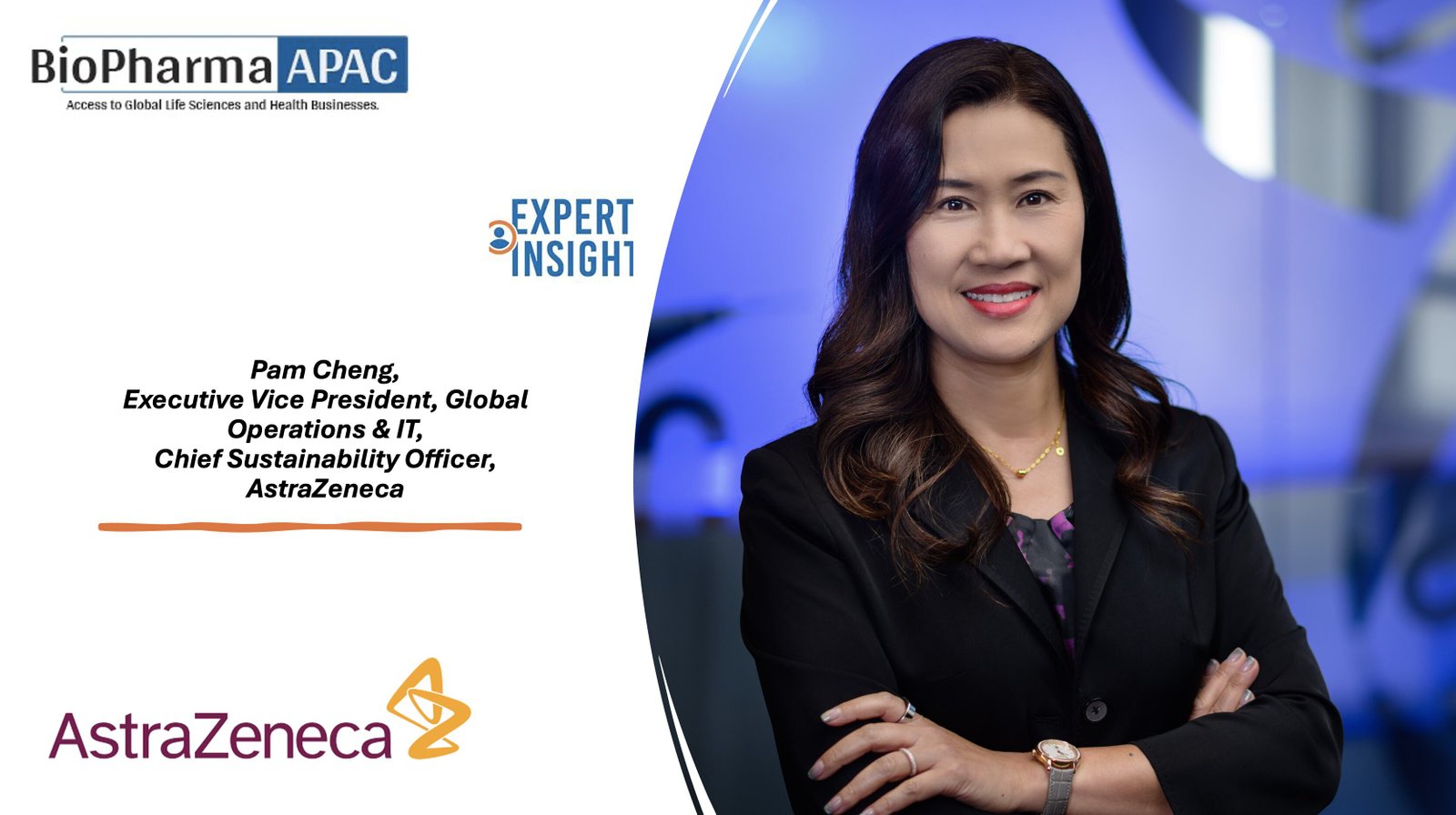Pam Cheng Outlines AstraZeneca’s Bold Vision for Singapore’s First End-to-End ADC Manufacturing Facility
15 November 2024 | Friday | Interview

In an exclusive interview with BioPharma APAC, Pam Cheng, Executive Vice President of Global Operations & IT and Chief Sustainability Officer at AstraZeneca, shares insights into the company’s ambitious plans for its new Antibody-Drug Conjugate (ADC) manufacturing facility in Singapore. Cheng discusses AstraZeneca’s hiring strategy for specialized roles, the commitment to achieve zero carbon emissions from day one, and how the facility aligns with the company's vision for advancing precision oncology and expanding access to life-saving cancer therapies globally.
Could you elaborate on the types of roles AstraZeneca will be hiring for, and what specific skill sets will be prioritized for the new ADC manufacturing facility?
Antibody Drug Conjugates (ADCs) are next-generation treatments that deliver highly potent cancer-killing agents directly to cancer cells. Manufacturing ADCs is a complex process which requires specialised skill sets.
We plan to hire over 800 highly-skilled employees across disciplines including engineering, quality control, technical services and global supply chain management, as design and construction begins on our end-to-end ADC manufacturing facility.
How does AstraZeneca plan to achieve zero carbon emissions from day one at this facility, and what specific sustainable practices or technologies will be implemented?
We are keeping sustainability in mind from the very beginning, and the ADC manufacturing facility will be designed to be a highly efficient and green facility. Thanks to the strong partnership with the Singapore government and other key partners, it will operate on renewable energy and emit zero carbon from its first day of operations.
Targeted to be operationally ready from 2029, the facility will play a significant part in helping us to achieve our Ambition Zero Carbon goals. At the enterprise level, we are committed to achieve near zero emissions from our sites and fleet by 2026, with the aim of halving our global value chain carbon footprint by 2030 and becoming carbon negative for all residual emissions.
Given the complexity of ADC manufacturing, what steps is AstraZeneca taking to ensure a seamless end-to-end production process at the new site in Singapore?
Our priority is to ensure the safety and efficacy of all our drugs, including those that require more complex processing like ADCs. We have implemented specialised manufacturing techniques and will leverage cutting-edge technologies to manufacture ADCs, while adhering to strict regulatory standards. This will ensure a seamless, end-to-end manufacturing process at the new facility in Singapore.
With AstraZeneca’s ADCs showing promising results across various cancer types, what impact do you expect this facility to have on the global availability of these treatments?
We have a strong portfolio of in-house ADCs including six wholly owned ADCs in the clinic and many more in preclinical development. The new facility is set to produce ADCs that can precisely target cancers, providing supply of the next-generation medicines to patients globally.
We are continuously assessing different market needs as part of our long-term strategy for this facility, but we expect it to play a key role in providing supply of the next-generation medicines to patients in Singapore and globally.
What factors led AstraZeneca to select Singapore as the location for its first global end-to-end ADC production site, and how do you view Singapore’s role in your overall expansion strategy?
Choosing Singapore to build our new facility was a relatively easy decision, given its reputation for excellence in complex manufacturing and depth of talent. With the country’s global reputation as a “green city”, we are also keen to work with the Singapore government and other local partners on green solutions for the ADC facility to ensure it is zero carbon from its first day of operations by 2029.
Can you provide insights into how this new facility aligns with AstraZeneca’s broader goals for advancing precision cancer therapies and the anticipated benefits for patients globally?
ADCs are a key part of our Oncology R&D strategy – our vision is for ADCs to replace chemotherapy and become the backbone for novel cancer combination regimens.
The new facility represents an investment in the skills and innovation that will drive the future of healthcare and ultimately accelerate access to life-saving treatments for patients.
Most Read
- The New AI Gold Rush: Western Pharma’s Billion-Dollar Bet on Chinese Biotech
- Top 25 Biotech & Biopharma Leaders in Sustainable Innovation, 2025
- China’s Biopharma Dealmaking Surges in H1 2025, Driven by Record Licensing and Oncology Focus
- Chikungunya in China: How a “Forgotten” Arbovirus Found the Perfect Storm
- How Innovation Gaps in Biopharma Raise New Safety Concerns
- Smart Implants and the Future of Musculoskeletal Injury Treatment
- How Ethical Gaps in Psychiatry Could Undermine Biopharma Progress
- The Evolving Landscape of Women’s Health Innovation in the Asia-Pacific
- Using NLP-Driven Decision Support in Emergency Health Assistance
- Taiwan Steps Into the Global Spotlight With a New Cancer Therapy
- The Role of Unique Device Identification (UDI) in Tracing Medical Device Safety
- The Importance of a Patient’s Mental Health During Clinical Trials
Bio Jobs
- The State of Biotech and Life Science Jobs in Asia Pacific – 2025
- Avantor’s New CEO Ligner Aims to Unlock Global Potential and Deliver Shareholder Value
- AstraZeneca Commits $50 Billion to U.S. Expansion by 2030 in Biggest-Ever Global Investment
- Thermo Fisher, SAMRC, and South Africa’s Department of Science and Innovation Launch CATIR to Nurture Next-Gen Scientists
- Cube Biotech Appoints Former Sartorius CEO Dr. Joachim Kreuzburg to Board of Directors
- FDA’s AI Transition Marks a Turning Point in Drug Review: Industry Faces Pressure to Adapt Amid 20% Workforce Cut
- WuXi XDC Completes Mechanical Build of Singapore Bioconjugate Manufacturing Hub
News
Editor Picks











